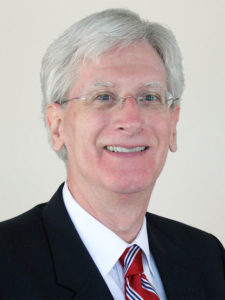
Ad-libs: The power of enthusiasm
There’s a story about a professor of literature at the University of North Carolina in Chapel Hill. As he approached retirement, someone from the newspaper interviewed him.
Home / Columnists / Page 3

There’s a story about a professor of literature at the University of North Carolina in Chapel Hill. As he approached retirement, someone from the newspaper interviewed him.

By Jim Pumarlo Editors often raise red flags – or at least hesitate – at requests for business news, and often for good reason. A

People usually say “no” to things they don’t understand. It’s a salesperson’s job to help prospects understand what he or she is selling. What makes media choice A better than choice B?

In the advertising business, there are things that must be done in order to create an effective campaign. Think of it as Advertising’s Bill of Rights: Send the right message…to the right audience…in the right medium…at the right time…about the right product (or service)…which sells for the right price…in the right environment.
In his latest "Ad-Libs" column, veteran sales trainer John Foust takes a deeper look at some of these basic principles.

Oboes set the pace for the entire orchestra. It’s easy to see a direct comparison to a leader’s role in the business world, writes veteran sales trainer John Foust.
A few points to keep in mind, he writes: Leaders lead by example, don't micromanage and periodically review goals.

Transparency is a key principle of business communication. When we are transparent with other people, we eliminate the window shades of pride and embarrassment which tempt us to wait “one more day” before sharing what we fear could be interpreted as bad news, writes veteran sales trainer John Foust
In the most recent installment of his "Ad-Libs" column, Foust provides some tips for executing this approach and discusses why it is necessary.

It’s no coincidence that when local journalism declines, so does government transparency and civic engagement — coverage of local government bodies and the decisions that affect readers’ everyday lives is an important part of what newspapers do.
But timely and relevant public affairs reporting takes planning and it requires newsrooms to look at the continuum of coverage – not just reporting on the meetings, writes Jim Pumarlo in his most recent column.

It’s easy to be vague. It’s challenging to think – and communicate – in specifics, writes veteran sales train John Foust in his most recent "Ad-Libs" column.
Specifics are meaningful and generalities wander all over the place, without much significance at all. Generalities have no sticking power. Foust looks at two areas of sales that have a particular need for specificity.

Newsrooms have toiled the past many weeks churning out stories to help voters make informed choices on Election Day.

One of the most important techniques in communication – especially in persuasive communication – is to tell people "why," writes veteran sales trainer John Foust.
In his latest "Ad-Libs" column, Foust gives five examples of how to use simple bridges to explain your reasoning to prospects during sales presentations.